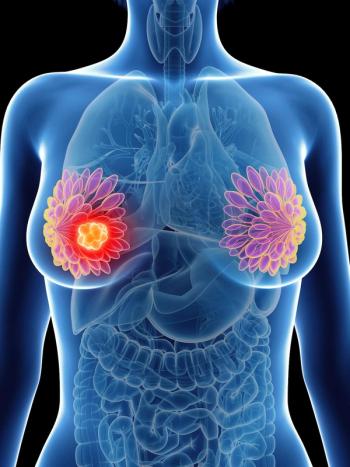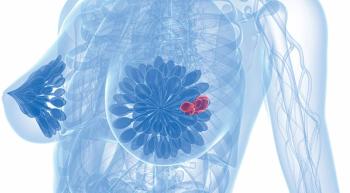
Do Fat Levels Alter Breast Cancer Risk Even Among Women With Normal BMI?
Data from the Women’s Health Initiative showed that higher levels of body fat were associated with an increased risk of invasive breast cancer, calling into question BMI as an adequate marker for increased risk.
Higher levels of body fat were associated with an increased risk of invasive breast cancer in an analysis of data from the Women’s Health Initiative (WHI), specifically among postmenopausal women with normal body mass index (BMI). The findings suggest that BMI may be an inadequate marker for increasing risk.
“The recognition of obesity as a risk factor for several cancers is largely based on the use of anthropometric indices, such as BMI,” wrote study authors led by
The new study included 3,460 women who were enrolled in the WHI from 1993 through 1998; all those included were aged 50 to 79 years (mean age, 63.6 years) and had a BMI ranging from 18.5 to 24.9, and all underwent body fat measurements using dual-energy x-ray absorptiometry. There were 182 incident breast cancers among those women, including 146 that were estrogen receptor (ER) positive. The women were followed for a median of 16.4 years; the results were
A group with whole-body fat mass of 18.7 kg or less were used as the reference group. Compared with those women, those with fat mass of 18.8–22.0 kg had an adjusted hazard ratio (HR) for invasive breast cancer of 1.45 (95% CI, 0.91–2.30). Those with fat mass of 22.1–25.1 kg had an HR of 1.89 (95% CI, 1.06–2.64), and those with mass of greater than 25.1 kg had an HR of 1.89 (95% CI, 1.21–2.95; P value for trend = .004). When considered as a continuous variable, the HR per 5-unit increase was 1.28 (95% CI, 1.10–1.49).
A similar result was seen for whole-body fat percentage; when considered as a continuous variable, the HR per 5-unit increase was 1.19 (95% CI, 1.03–1.37). For trunk fat mass, the continuous HR per 5-unit increase was 1.46 (95% CI, 1.14–1.87).
The corresponding HRs for ER-positive breast cancer for whole-body fat mass, fat percentage, and trunk fat mass were 1.35 (95% CI, 1.14–1.60), 1.27 (95% CI, 1.08–1.48), and 1.56 (95% CI, 1.18–2.06), respectively. In each case, the highest quartile had significantly increased risk compared with the reference quartile.
The study also found differences with regard to circulating levels of metabolic and inflammatory factors. There were positive associations between levels of insulin, C-reactive protein, interleukin-6, and other factors, and fat mass of the trunk. Inverse associations were seen with regard to high-density lipoprotein cholesterol, adiponectin, and sex hormone-binding globulin.
“The results of this study indicate that postmenopausal women with increased levels of body fat are at elevated risk of breast cancer despite having a normal BMI,” the authors concluded. “These findings support the need for clinical trials evaluating the role of fat loss interventions and antiestrogen therapy for breast cancer risk reduction in postmenopausal women with normal BMI and high body fat levels.”
In an accompanying
Newsletter
Stay up to date on recent advances in the multidisciplinary approach to cancer.



















































































